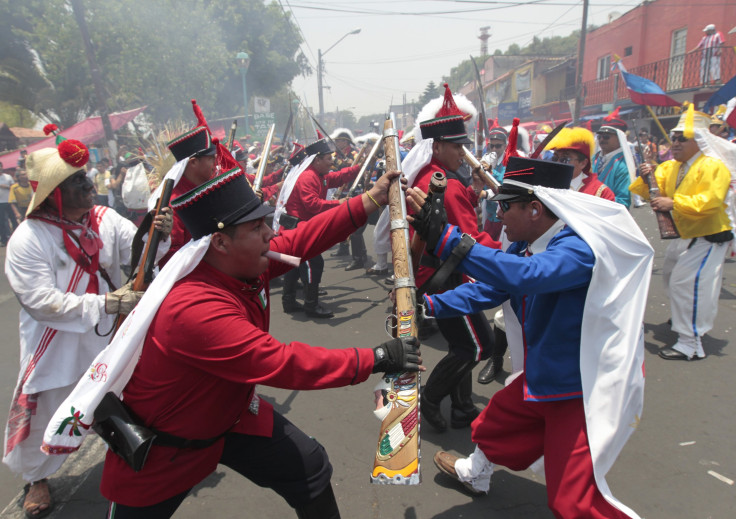
(1) The first thing you need to know about Cinco de Mayo is that in Spanish cinco means “five” and de mayo means “May” (not mayonnaise, that’s mayonesa). (2) Cinco de Mayo is not a big deal in Mexico as a whole. (3) Maybe that’s because it celebrates a French military defeat (no, we didn’t mean French military victory) during the Battle of Puebla, or (4) maybe that’s because it’s overshadowed by other Mexican holidays: Constitution Day, Independence Day, Mexican Revolution day, and a dozen other patriotic commemorations.
(5) Cinco de Mayo is a popular holiday in the State of Puebla (its like Mexico’s Gettysburg; they stage epic reenactments), and also in the U.S. (6) Los Angeles hosts the largest Cinco de Mayo Celebrations. Thousands turn out every year at the Fiesta Broadway and El Pueblo Cinco De Mayo celebrations. (7) Other large Cinco de Mayo parties happen in New York and San Antonio. (8) No matter where they’re celebrating, patriotic Mexicans and Chicanos are likely to sing songs such as "¡Qué bonita es mi tierra!" (How wonderful my land is!), “El Noa Noa” (about dancing at a now-defunct bar called Noa Noa), or “El Rey” (the King)... which is such a cool song that we wrote an article about how to learn the lyrics.
For you history buffs, here are a few things to know about the (9) 1862 Battle of Puebla, and why it was important. (10) A young Porfirio Díaz was a recognized for valor in the battle, cementing his fame decades before he started a long and controversial dictatorship. The war started for three main reasons. (11) Mexico had just fought a civil war and was broke. (12) It couldn’t pay it’s debts to European creditors. (13) Also, the U.S. was in it’s own Civil War, and France (run by Napoleon III) thought that it could take advantage by conquering Mexico and bringing it into its sphere of influence. (14) The U.S. had humiliatingly defeated Mexico in a war two decades earlier, so winning a war against a foreign power was huge for Mexico’s confidence. It wouldn’t be bullied around any more.
© 2024 Latin Times. All rights reserved. Do not reproduce without permission.
